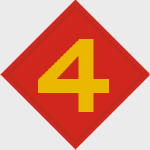Hobby Master HG4407 USMC LVT(A)-2 'Water Buffalo' Amtank Amphibious Vehicle - Beach Yellow 1, 10th Marine Amtrac Battalion, 4th Marine Division, Iwo Jima, 1945 (1:72 Scale)
"Last week some 2,000 or 3,000 United States Marines, most of them now dead or wounded, gave the nation a name to stand beside those of Concord Bridge, the Bon Homme Richard, the Alamo, Little Big Horn, and Belleau Wood. The name was Tarawa."
- Robert Sherrod, Time Magazine War Correspondent embedded with the US Marines, December 6th, 1943
 The Landing Vehicle Tracked (LVT) was a class of amphibious vehicles introduced by the United States Navy, Marine Corps and Army during World War II. Originally intended solely as cargo carriers for ship to shore operations, they rapidly evolved into assault troop and fire support vehicles as well. The types were all widely known as amphtrack, amtrak, amtrac etc., a portmanteau of amphibious tractor.
The Landing Vehicle Tracked (LVT) was a class of amphibious vehicles introduced by the United States Navy, Marine Corps and Army during World War II. Originally intended solely as cargo carriers for ship to shore operations, they rapidly evolved into assault troop and fire support vehicles as well. The types were all widely known as amphtrack, amtrak, amtrac etc., a portmanteau of amphibious tractor.
After much deliberation, it was determined that amphibious tracked vehicles were the only solution to this problem. Both the amtrac and the amtank were developed, designed to be able to climb onto a reef from the sea then advance across the rough coral to the beach without exposing the troops inside to small arms fire. The amtracs were responsible for transporting troops ashore where they could continue the assault. The amtanks, on the hand, led the way, firing at the enemy positions the moment naval gunfire and air strikes lifted.
Based on the LVT-2, the LVT(A)-1 fire support version had an armored (6 to 12 mm) hull. It was fitted with a turret nearly identical to that of the Light Tank M3, with a 37 mm Gun M6 in an M44 mount, and also carried two rear-mounted machine guns. 510 units produced.
Pictured here is a 1:72 scale replica of a USMC LVT(A)-2 'Water Buffalo' Amtank Amphibious Vehicle that was deployed to Beach Yellow 1, and attached to 10th Marine Amtrac Battalion, 4th Marine Division, then participating in the Battle of Iwo Jima, during February 1945.
Sold Out!
Dimensions:
Length: 4-1/4-inches
Width: 1-3/4-inches
Release Date: May 2015
 Historical Account: "Bloody Iwo" - The Battle of Iwo Jima (February 19th - March 26th, 1945), or Operation Detachment, was a battle in which the United States fought for and captured Iwo Jima from Japan. The U.S. invasion was charged with the mission of capturing the two airfields on Iwo Jima. The battle produced some of the fiercest fighting in the Pacific Campaign of World War II.
Historical Account: "Bloody Iwo" - The Battle of Iwo Jima (February 19th - March 26th, 1945), or Operation Detachment, was a battle in which the United States fought for and captured Iwo Jima from Japan. The U.S. invasion was charged with the mission of capturing the two airfields on Iwo Jima. The battle produced some of the fiercest fighting in the Pacific Campaign of World War II.
The Japanese positions on the island were heavily fortified, with vast bunkers, hidden artillery, and 18 km (11 mi) of underground tunnels. The Americans were covered by extensive naval and air support, capable of putting an enormous amount of firepower onto the Japanese positions. The battle was the first American attack on the Japanese Home Islands, and the Imperial soldiers defended their positions tenaciously. Of the more than 18,000 Japanese soldiers present at the beginning of the battle, only 216 were taken prisoner. The rest were killed or were missing and assumed dead. Despite heavy fighting and casualties on both sides, Japanese defeat was assured from the start. The Americans possessed an overwhelming superiority in arms and numbers, coupled with the impossibility of Japanese retreat or reinforcement, ensured that there was no plausible scenario in which the United States could have lost the battle.
The battle was immortalized by Joe Rosenthal's photograph of the raising of the U.S. flag on top of the 166 m (545 ft) Mount Suribachi by five Marines and one Navy Corpsman. The photograph records the second flag-raising on the mountain, which took place on the fifth day of the 35-day battle. The picture became the iconic image of the battle and has been heavily reproduced.
Iwo Jima was also the only U.S. Marine battle where the American casualties exceeded the Japanese, although Japanese combat deaths numbered three times that of the Americans.





 Amtrac
Amtrac 


